B4S Survey Report 3: “Higher education” falls as we move from Desire, Expectation, and Reality Reports
Posted on June 23, 2016
By B4S (Bridge for Smile)
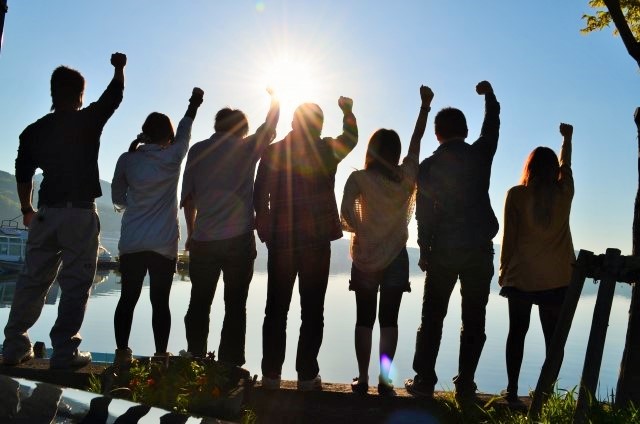
For this survey, a Japanese nonprofit, B4S (Bridge for Smile) , surveyed the high school-aged children who are living in the homes, and received responses from 1,079 high school students at 173 homes.
* For more information about B4S and the survey report, please refer to the end of the article.
In the survey done through the children’s homes, the percentage of students who proceeded to higher education after leaving the homes was 21.9%. However, when asked what is their “desired path” 36.2% responded “higher education” (Chart 3). The same answer registered 27.9% for their “expected path”, 8.3% lower than “desired path.”
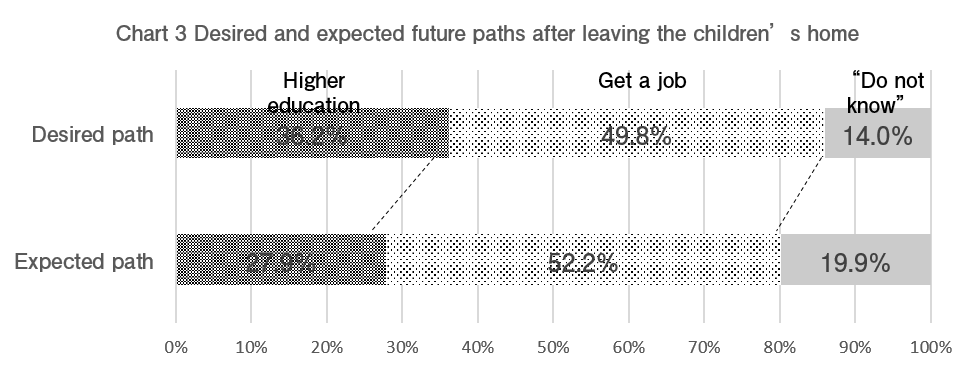
In the free-response part of the questionnaire, “money” was most often cited as the reason for why they foresee themselves entering the workforce despite wanting to continue to higher education. A response that stood out was “I want to pursue higher education but I don’t have the funding, so first I will get a job, and I hope to save the money to go back to school.”
Comparing the responses from students across the grades, as the grade levels get higher the “get a job” response increased for both “desired” and “expected” paths. 41.9% of first year high school students indicated “get a job” as their desired path, while the figure was 45.9% for second year students and 60.9% for third year students. For “get a job” as the “expected” path for high school students, the numbers were 42.2% for first year students, 51.2% for second year students, and 63.0% for third year students.
Of those who had a desired type of job in mind, 42.0% percent desired “higher education,” while only 20.8% of those without a job in mind desired “higher education.” For these high school students living in children’s homes faced with the need to finance their own living expenses and tuition, there is an increasing need to elucidate the function of the albeit costly option of higher education as a bridge leading to future forms of employment.
Where typical high school students often “go on to higher education because they have no specific idea of what they want to be”, the same luxury is not applicable to students living in children’s homes.
Stronger self-esteem than typical high school students
The Japan Youth Research institute conducted relevant studies entitled “Survey on Physical and Mental Health of High School Students” and “Lifestyle and Awareness of Junior High and High School Students.” In these studies, they asked students questions pertaining to self-esteem. We used these as reference, and asked the same questions to high school students living in children’s homes. The results showed that the students living in homes scored higher on 12 out of 15 items than typical high school students (chart 4).
It had often been brought up as a problem before that high school students living in children’s homes have low levels of positive feelings about themselves. Even in the survey that we conducted this time, we received responses such as “There are lots of children without positive feelings about themselves” (from a children’s home staff member in Chiba) and “We have to deal with rebuilding children’s positive feelings about themselves” (from a children’s home staff member in Tokyo).
This brings up the possible hypotheses as to why self-esteem was found to be higher in this survey. It might be a result of the nurturing efforts of children’s home employees. Perhaps it comes from the strong resilience (ability to mentally recover) of being placed in a tough situation. Finding the reason will necessitate further analysis.
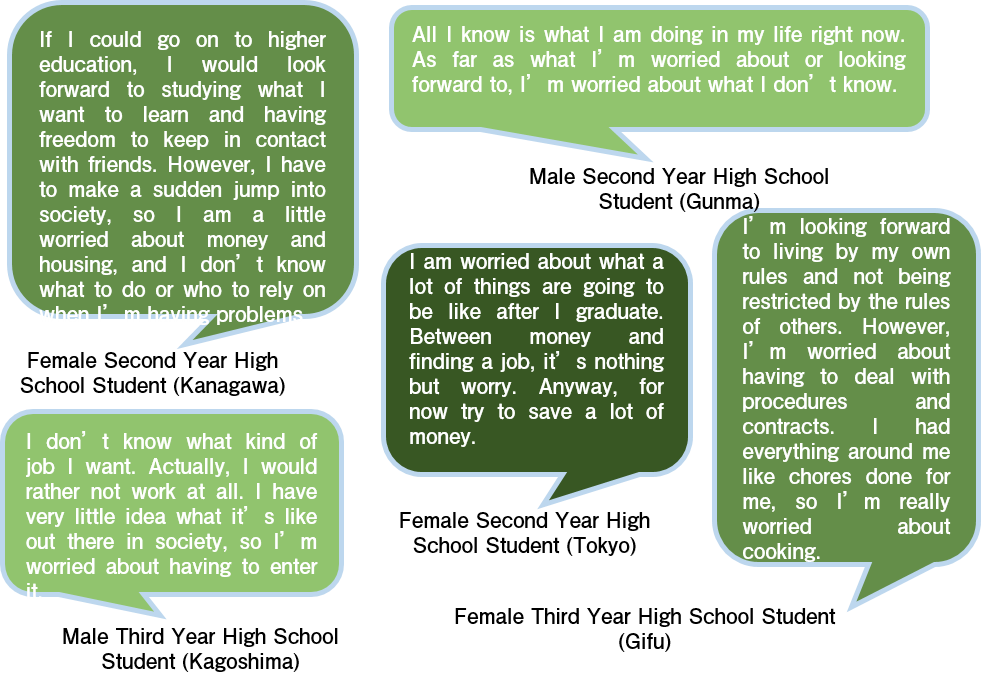
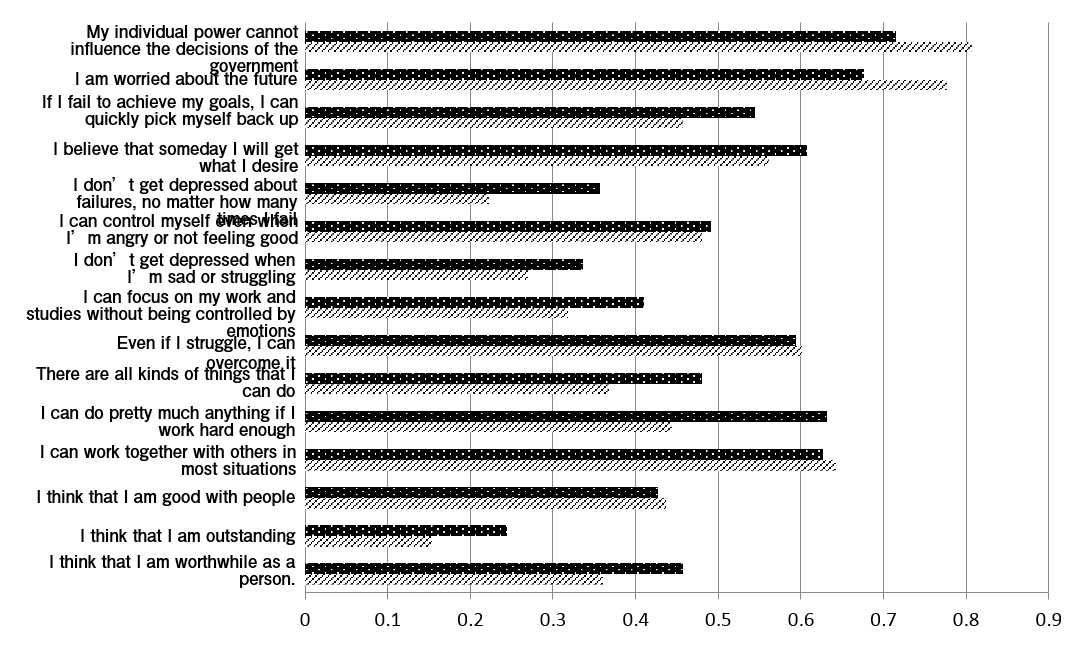
Major anxiety. High school students who “do not know” their path
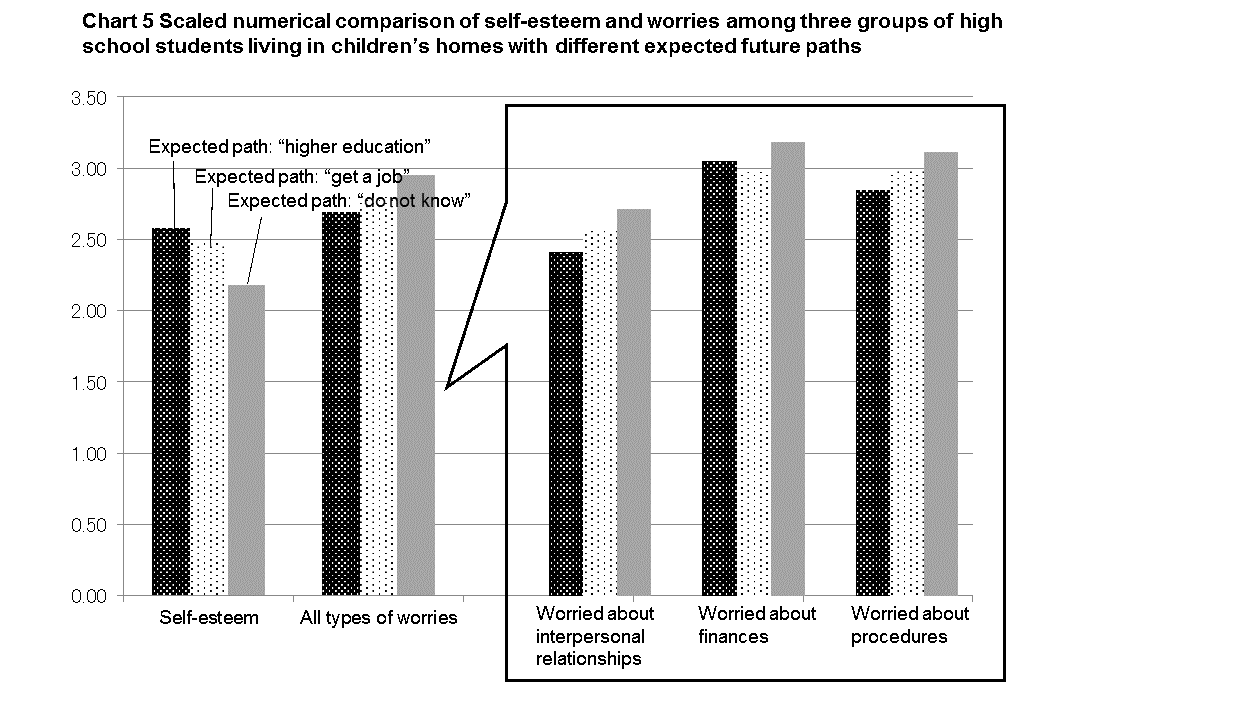
Chart 5 analyzes the relationship between the expected future paths illustrated in chart 3, and the answers regarding self-esteem that are shown in chart 4, and responses for worries about the future after leaving the children’s homes. While matching progressively higher point values to higher degrees of responses for self-esteem and worries for the future after leaving the children’s home, we also compared the average scores for each expected future path (“higher education”, “get a job”, “do not know”).
Students that answered “do not know” regarding their expected future path scored lower for self-esteem, than students who answered “higher education” or “get a job.” Furthermore, high school students that answered “I don’t know” showed higher levels of all three types of worries, showing that they must have quite a few more worries than the others.
However, concerning financial issues such as living expenses and managing finances, there was only a 0.14 point difference between high school students that expect to proceed to “higher education” and those that “do not know,” showing a relatively equal level of concern.
From the results of this research we were unable to draw any conclusions about possible cause-and-effect relationships, such as whether students “do not know” their path because they have low positive feelings about themselves, or whether the greater levels of worries they have result from “not knowing” their future path.
However, considering also the large numbers of children that end up quitting their jobs soon after leaving the homes, which we observed in chart 2, we can say that there needs to be much deeper and more far-sighted support for the children for when they leave children’s home life and go off into the world.
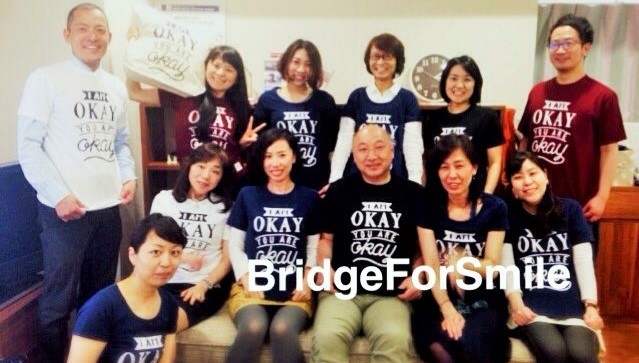
About Bridge for Smile (B4S) and This Survey Report
A Japanese nonprofit, B4S has been working on aiding children residing in children’s homes since its founding in 2004. The number of children receiving care from the children’s homes approximates at around 30,000 in Japan. These children, bearing emotional burdens, such as history of abuse and parents’ with poor health, are forced to match up to the expectations of society and be independent at the age of 18. At an age where most of their counterparts have the luxury of family support, they are left to face the harsh realities of society. In order to elucidate the situation faced by these children, B4S summarizes a report based on a survey conducted by the organization in 2014. The content in this report is entirely extracted from the Self-Reliance Support White Paper 2014 published by B4S.
* B4S is a grantee of Adobe Foundation (2011-2015) facilitated by Give2Asia, a partner of JNPOC.
Recent Articles
- The Evolution of Philanthropy: Five approaches shaping contemporary practice
- 25 years of community understanding and moms’ hard work: The activities of Kinutama Play Village
- Connecting memories: Courage found at the film screening of parents’ legal battle after the Great East Japan Earthquake Tsunami
- An NPO project I came across while reflecting on teacher shortages after leaving my teaching job
- To unlock philanthropy’s potential for Japan, we need to understand its meaning
- Cultivating a healthier agricultural and societal foundation: Passing on the knowledge and practices of environmental regeneration to future generations